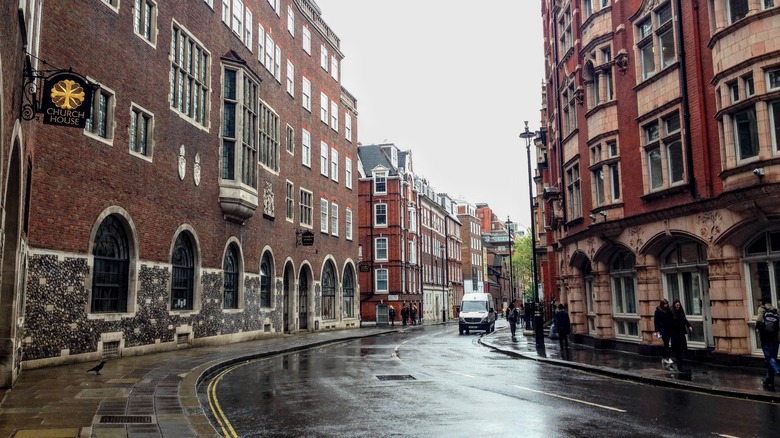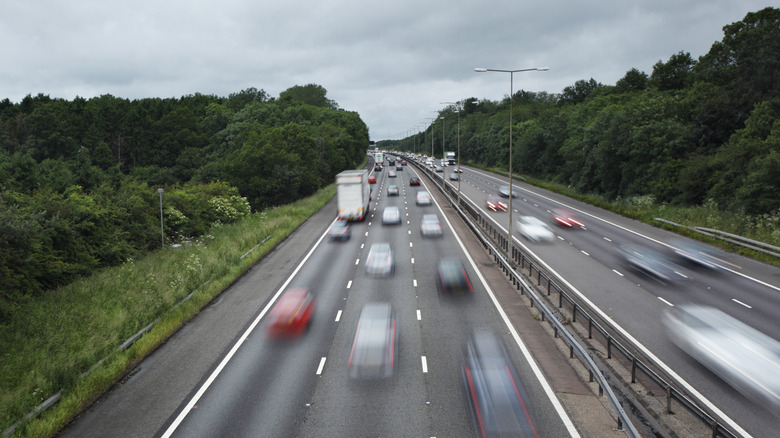Locals Hate When Tourists Don't Follow This Essential Road Rule In Britain, Per Rick Steves
While Europe is known for its excellent public transportation, many travelers opt instead to rent a car in Europe and drive. Doing so can perhaps bring you further off the beaten path and allow you to come and go at your own pace, rather than being at the mercy of a train schedule. However, a bit of extra research goes into driving in any new country, and Great Britain is no exception.
Transportation in Great Britain is practically embedded into pop culture, from souvenirs that feature the London's subway "Mind the Gap" safety warning, to Scotland's Glenfinnan Viaduct, which was used to film wide shots of the Hogwarts Express train in the "Harry Potter" films. Wherever you go in the United Kingdom, prepare yourself to drive on the left side of the road. Travel expert Rick Steves explains that highways or freeways are called motorways in Britain, and they do come free of tolls, despite not having "free" in the name. In addition to driving on the left, major highways come with another big rule. "Unless you're passing, stay in the 'slow' lane on motorways (the lane farthest to the left)," Steves states on his website. "Remember to pass on the right, not the left."
Passing a car on the left could lead to trouble
The motorway passing-on-the-right rule in Great Britain is not just commonplace, it is mandatory. Rick Steves warns that you could receive a ticket from law enforcement or make other drivers rather annoyed (or likely both!) if you ignore it. Given that the rule is to stay close to the lane farthest to the left when on a British motorway, this should help you remember to pass other drivers on the right. The goal is to stay on the left as much as you can.
For motorways specifically, look for the letter "M" along with the road's number. Similar to the United States, British motorways do not have stoplights, and the speed limit is around 70 miles per hour. Steves also cautions United Kingdom visitors to know the cities along your route, because road numbers might change. England, Wales, and Scotland are split into zones, and a road's number starts with the zone of its origin, even if it enters a new zone. Numbering systems change from each part of the island as well. Knowing what rules to expect ahead of time can help you plan the perfect European travel itinerary.

